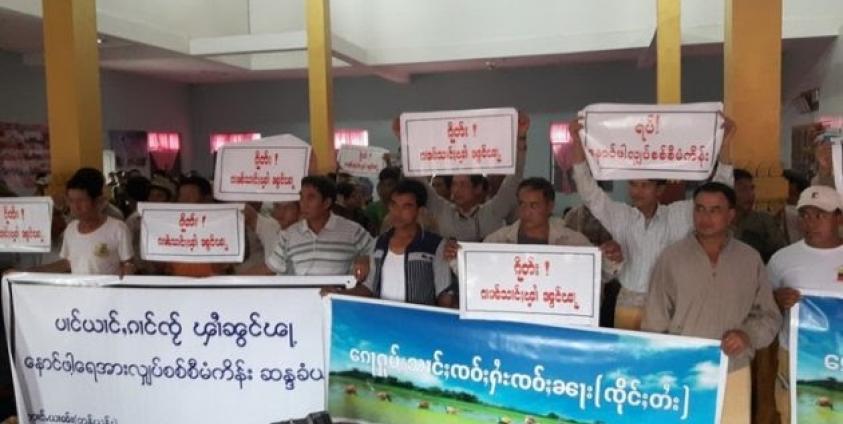A statement by the Committee for Shan State Unity (CSSU) has criticised Burmese Government plans to dam the Salween river, questioning the economic benefits of various projects and raising concerns over their environmental impact and effect on the ongoing conflict situation in Shan and Kachin States.
According to the community based organisation Salween Watch, six hydropower projects are being developed on the Salween: the Upper Salween Dam, also known as Kunlong Dam (1,400 MW), Nong Pha Dam (1,000 MW), Mai Tong Dam also known as Tasang Dam (7,110 MW), Manntaung on a tributary of the Salween (200 MW) (the four dams are located in Shan State), Ywathit Dam in Kayah (Karenni) State (4,000 MW) and Hat Gyi Dam in Karen State (1,360 MW).
The dam projects are being developed jointly between Chinese corporations, Thailand’s EGAT International Co., Ltd. and Burmese investors, Salween Watch
“If they [the dam projects] are built, they will threaten the future of the ethnic communities relying on the river and the rich biodiversity of the river basin”, the CSSU statement said.
“Most of the electricity produced will be exported to China and other neighbouring countries.” The CSSU statement added.
The dam projects are controversial because they straddle active areas of conflict, and the majority of power, up to 90% in some cases, produced by the projects will go to mainland China.
The decision to go ahead with the dam projects was recently announced following a visit by prominent government figure Aung San Suu Kyi to mainland China last month.
The CSSU claimed that the dam projects were “not being carried out to international standards” and that there was “no transparency and no respect for the rights of impacted communities.”
The CSSU is a group comprised of Shan political parties and armed groups, including the Shan Nationalities League for Democracy (SNLD), the Shan Nationalities Democratic Party (SNDP), the Shan State Progress Party (SSPP) and the Restoration Council of Shan State (RCSS).








